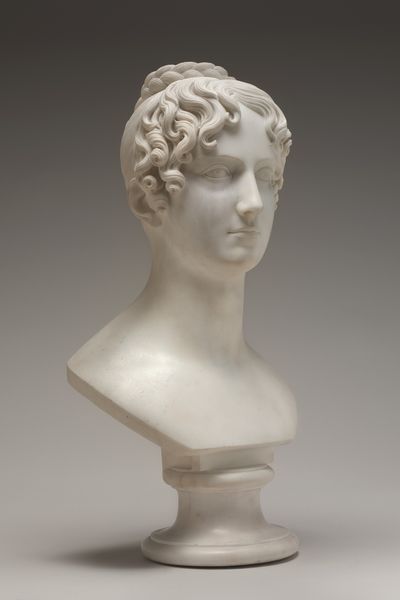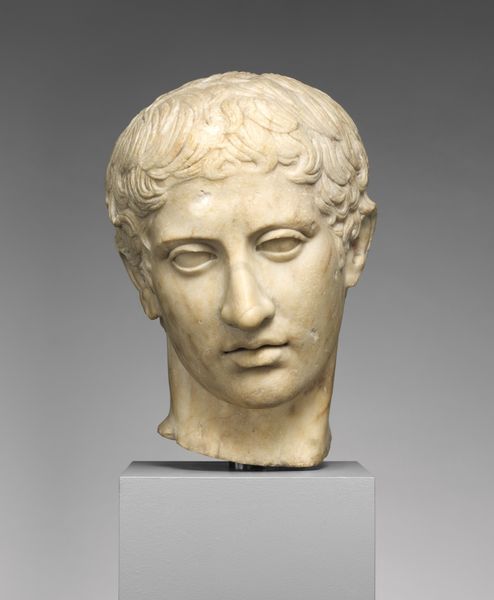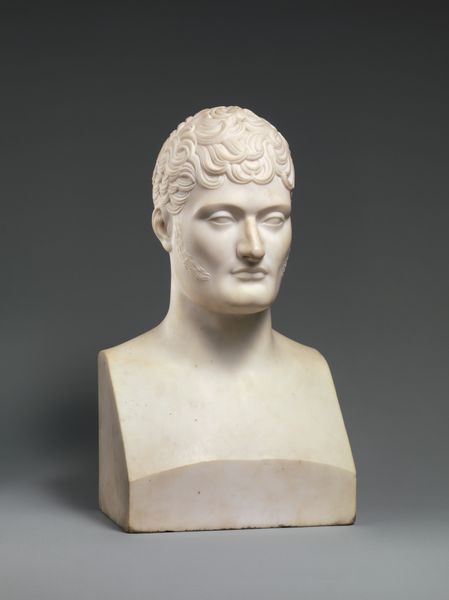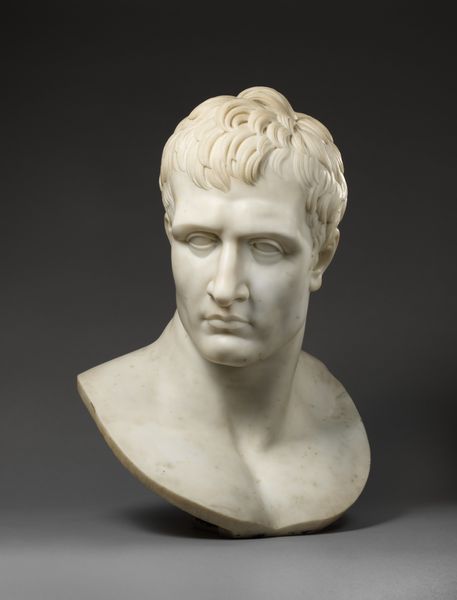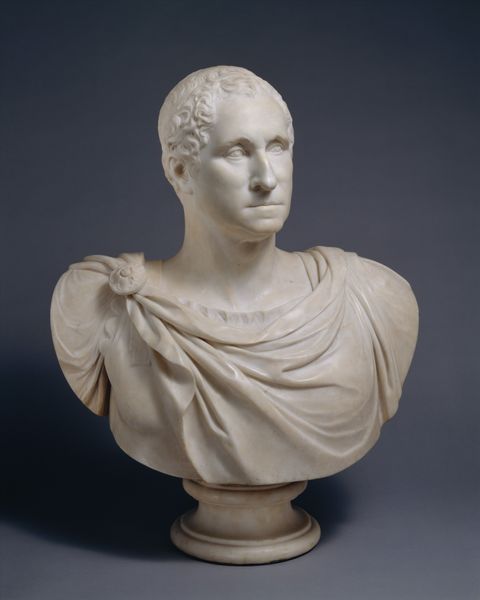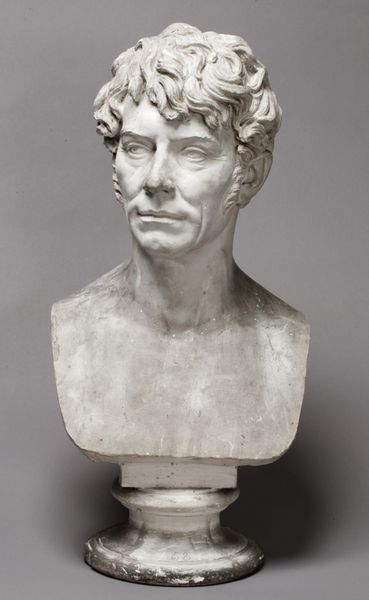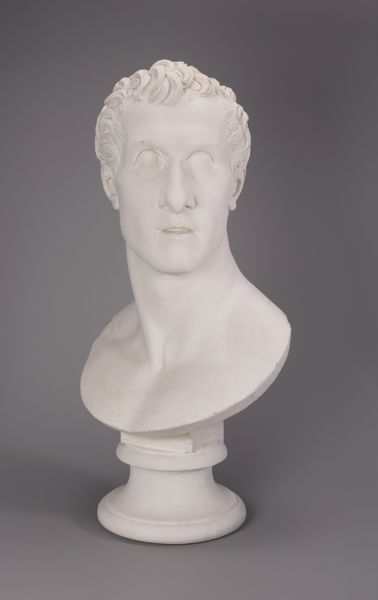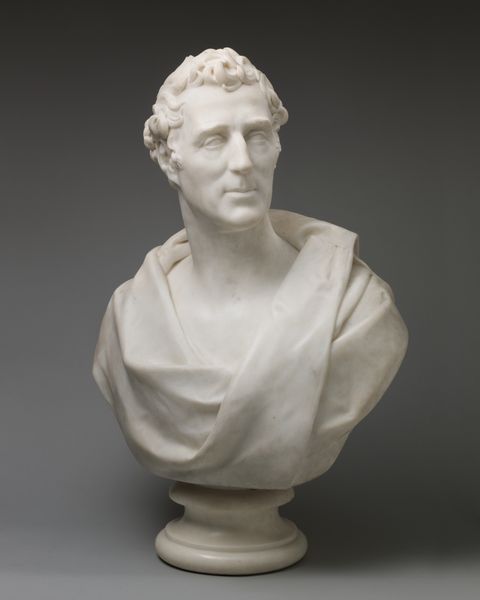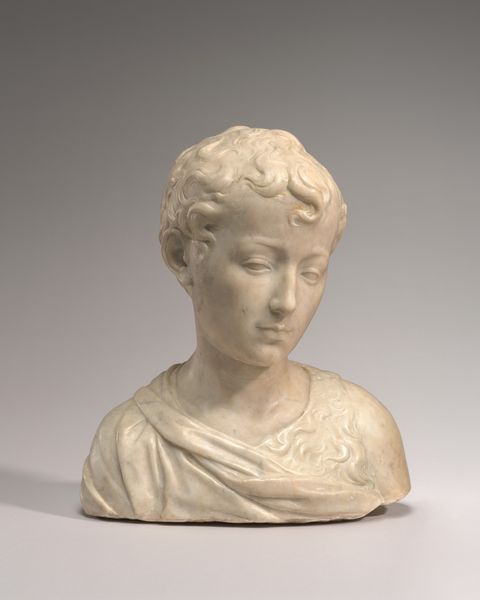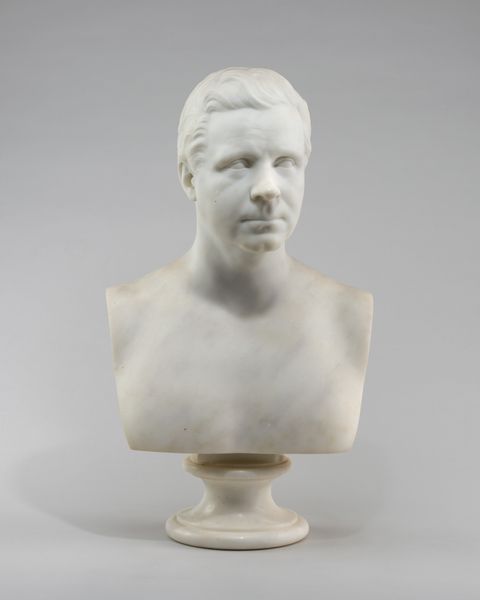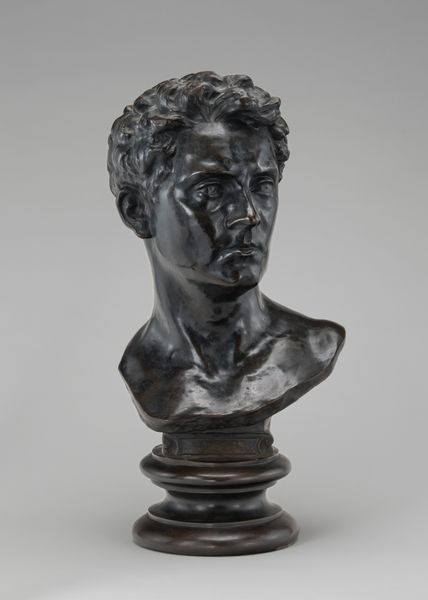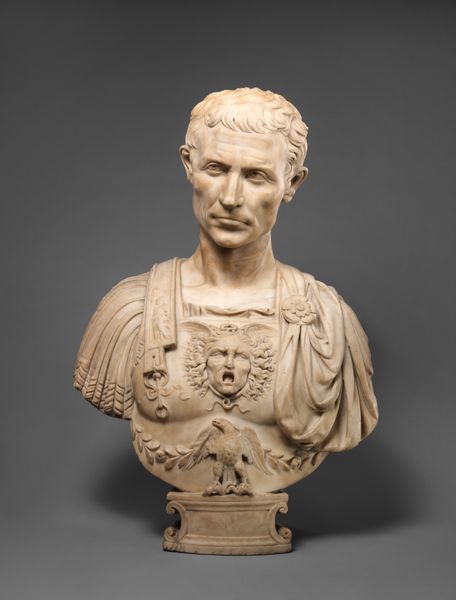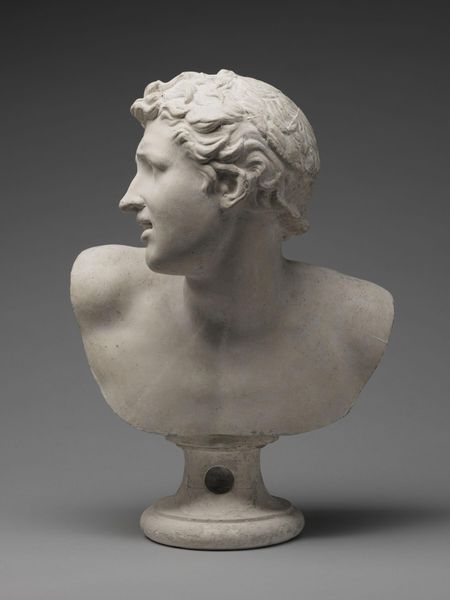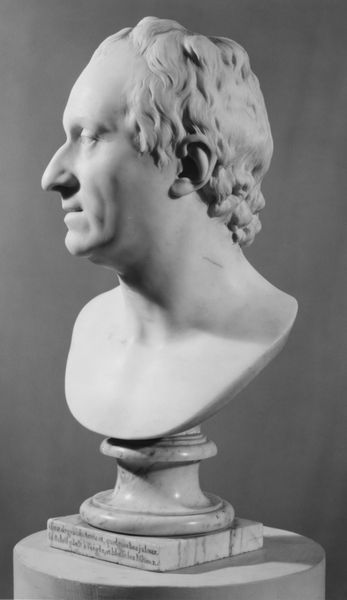
sculpture, marble
#
portrait
#
neoclacissism
#
sculpture
#
classical-realism
#
figuration
#
form
#
sculpture
#
marble
#
realism
#
statue
Dimensions: height 56.5 cm, width 24.7 cm, depth 23.0 cm
Copyright: Rijks Museum: Open Domain
Paulus Joseph Gabriël made this marble bust of Cornelis Apostool sometime in the late 18th or early 19th century. It is a Neoclassical portrait, which revives the aesthetics of ancient Greece and Rome. We see that the artist adopts a starkly classical style, one that idealizes its subject as a man of intellect and status. Notice how the bare neck and shoulders reflect the visual codes of ancient Roman portraiture. It is worth noting that Apostool was the director of the Royal Picture Gallery in The Hague, making this an image of a significant art world figure by an artist working in the Netherlands. The work seems to uphold the artistic status quo. It is a fine example of the kind of institutional portraiture that helped to define the era. To better understand its place in the history of art, we might research the history of the Royal Picture Gallery or the Neoclassical revival in the Netherlands. The meaning of a work of art is always contingent on this kind of contextual understanding.
Comments
rijksmuseum about 2 years ago
⋮
Apostool was the first director of the Koninklijke Museum in Amsterdam, forerunner of the Rijksmuseum. His portrait was sculpted by the royal sculptor Paulus Gabriël, who chose a Classical form whereby Apostool’s head appears to emerge naturally from a block of stone. This type of portrait, known as a herm, was used mainly for artists and art lovers.
Join the conversation
Join millions of artists and users on Artera today and experience the ultimate creative platform.
